Have you ever looked at your prescriptions or medical records and wondered what all those abbreviations mean?
Abbreviations are used in medical settings to save doctors and nurses valuable time and space when writing prescriptions and other healthcare records.
Here we provide a brief guide on what some of the most common medical abbreviations used in the UK mean. Please feel free to bookmark this page so that you can return to it when you need it.
At Prestige Nursing & Care, we recognise that ensuring medications are managed effectively is critical to the health and well-being of our clients. Our carers can manage complex medication regimes, provide sensitive medication reminders and collect medication from the pharmacy.
For over 75 years, we have been trusted by our clients and their families to provide competent and compassionate home care services. Contact our friendly care experts today to discuss how we can support your family.
WHY ARE THERE SO MANY MEDICAL ABBREVIATIONS?
Doctors, nurses, and other healthcare staff see a large number of patients every day. Medical abbreviations are a convenient way to convey important medical information quickly so that healthcare professionals can spend more time with their patients.
Abbreviations can save healthcare professionals precious space and time while writing prescriptions or healthcare records. For instance, instead of having to write “to be taken once a day”, a doctor or nurse may simply write “OD” to save time.
Abbreviations can also help eliminate human error due to misspellings, typos or handwriting that is difficult to understand.
LIST OF COMMON MEDICAL ABBREVIATIONS
It is important to note that healthcare staff sometimes use the same abbreviations to mean different things.
If you do not know what something in your health records or prescriptions means, ask your GP, nurse or pharmacist.
| Abbreviation | Meaning |
| OD | To be taken once a day |
| BD | To be taken twice a day |
| TDS | To be taken three times a day |
| PRN | To be taken as needed |
| MD | To be taken as directed |
Medicines
| AC | To be taken before meals |
| NBM | Not by mouth |
| Mane | Morning |
| Nocte | Night |
| MD | To be taken as directed |
| PC | After food |
Medical Tests and Terminology
| BNO | Bowels not open |
| BO | Bowels open |
| CSU | Catheter stream urine sample |
| CT Scan | Computerised tomography |
| CXR | Chest x-ray |
| Dx | Diagnosis |
| ECG | Electrocardiogram |
| EEG | Electroencephalogram |
| EMU | Early morning urine sample |
| ESR | Erythrocyte sedimentation rate |
| EUA | Examination under anaesthetic |
| h/o | History of |
| Hx | History |
| Ix | Investigations |
| LA | Local anaesthetic |
| LFT | Liver function test |
| MRI | Magnetic resonance imaging |
| MSU | Mid-stream urine sample |
| NAD | Nothing abnormal discovered |
| NAI | Non-accidental injury |
| o/e | On examination |
| p/c | Presenting complaint |
| POP | Plaster of Paris |
| PTT | Partial thromboplastin time |
| PU | Passed urine |
| ROSC | Return of spontaneous circulation |
| Rx | Treatment |
| TCI | To come in |
| TFT | Thyroid function test |
| TPN | Total parenteral nutrition |
| TPR | Temperature, pulse and respiration |
| TTA | Nothing abnormal discovered |
| NAI | To take away |
| TTO | To take out |
| UCC | Urgent care centre |
Body & Conditions
| # | Fracture |
| AF | Atrial fibrillation |
| BMI | Body mass index |
| BP | Blood pressure |
| CSF | Cerebrospinal fluid |
| CVP | Central venous pressure |
| DVT | Deep vein thrombosis |
| FBC | Full blood count |
| Hb | Haemoglobin |
| HDL | High-density lipoprotein |
| HRT | Hormone replacement therapy |
| LDL | Low-density lipoprotein |
| MRSA | Methicillin-resistant Staphylococcus aureus |
| NG | Nasogastric |
| NoF | Neck of femur |
| RTA | Road traffic accident |
| STEMI | ST-segment elevation myocardial infarction |
| U&E | Urea and electrolytes |
| UTI | Urinary tract infection |
| VLDL | Very-low density lipoprotein |
| VTE | Venous thromboembolism |

